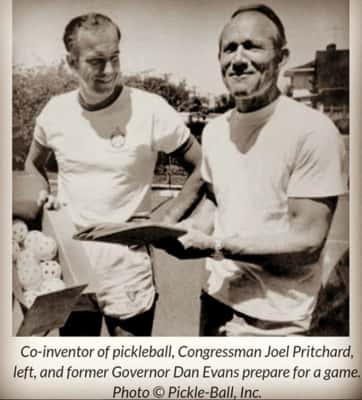
Sports and media often cross paths. The United States' sports leagues often pay large sums of cash to broadcasters and media companies. These companies can then recover these costs by selling advertising during sports shows or games.
In the 1950s, sports became more popular and television coverage increased. The increased interest in sports also led to a rise in costs for televising them. Museum of Broadcast Communications reports that the cost of televising National Football League games was $50 million in 1970.
In the 1970s, the cost of televising sports was growing at an exponential rate. Networks were able to pass this increased cost along to advertisers by charging more for sports programming. By the 1980s, this market was saturated. In 1985, however, there were three major networks that aired 15 hundred hours of sports programming.

Gillette Cavalcade of Sports, which ran between 1954 and 1985, was one of TV's most popular sports programs. The experiment lasted twenty years and was sponsored by one corporation. Networks replaced the Gillette marquee after the show ended with sports advertisements from a variety of buyers.
Another noteworthy program was the World Series of Baseball. Each team in the series would receive millions of dollars in prize money, and the networks would take in massive amounts of advertising revenue. Fox made $20 million each game during the 2002 World Series.
During the 2000s, the sports media world has changed significantly. Diluting spirits and hard liquor have become more prominent in sports television over the past decade. Television has seen more beer commercials than ever before. Women have also been used as props to show sex appeal. Sports media has reduced its shock factor since 2004.
The audience size is a key factor in the success or failure of sports media. A 2005 study by Boys to Men, a national research company, found that 98% US boys aged eight to seventeen watched at least one type of sports-related television. Basketball, football (and golf) were among the most-viewed sports programs.

While sports were getting more time on television, many programs saw a decrease in viewership. Particularly for men, the number viewing hours dropped by 6% during the 1990s. Even so, the viewership for one sport was still impressive, especially for soccer and football.
Other media outlets are also trying to profit from this youth wave. In March of 2005, ESPN launched ESPNU, a college-only sports station. More recently, Fox has introduced a new digital cable channel, FuelTV, which targets younger audiences.
Although sports programming has been around for a long time, it has only in the last decade or so regained its place as a central part of primetime network programming. This growth has been fueled by the increase in public interest and better coverage of events.
FAQ
Are there any exercises I shouldn't do?
Before starting any new exercise program, you should consult your doctor. There are some people who have medical conditions or injuries that make it difficult to exercise. Some activities may require special equipment, or training. Swimming, for instance, requires both a swimsuit as well as access to the pool.
What is Resistance Training?
Resistance training uses weights or other objects to perform certain movements. Lifting weights can strengthen your arms, shoulders and chest as well as your back, legs and core. Resistance training builds muscle mass, increases bone density, and promotes greater overall strength.
Is it safe to exercise when the temperature is below freezing?
It's a good idea to exercise outside as often as possible. The air temperature isn't the only factor determining whether it's safe to exercise outdoors. Visibility, wind speed, humidity and precipitation all play a part. Wear layers of clothing to keep you dry from rain and windchill when you exercise outside in inclement conditions.
Is it possible to gain weight by exercising?
Not at all. Exercising can help you maintain your current weight. Training regularly can help you build muscles, increase your metabolism, and burn more calories. This means your body won’t store as much weight.
How does caffeine affect my sleeping?
Caffeine effects how fast it takes to fall asleep and how much sleep you get. Caffeine induces drowsiness which makes it easier to fall asleep. However, caffeine can keep you awake longer and make it more difficult to fall asleep. You should not drink energy drinks or coffee right before bed.
Statistics
- In 2018, the World Health Assembly agreed on a global target to reduce physical inactivity by 15% by 2030 and align with the Sustainable Development Goals. (who.int)
- According to the Centers for Disease Control and Prevention, chronic diseases cause 7 out of 10 deaths in the U.S., and treating chronic diseases accounts for 86% of U.S. healthcare costs. (mana.md)
- An estimated 110,000 deaths per year could be prevented (cdc.gov)
- Globally, 81% of adolescents aged 11-17 years were insufficiently physically active in 2016. (who.int)
External Links
How To
How to Burn Belly Fats Faster
When trying to lose weight, belly fat is often viewed as a problem. However, Belly Fat can be beneficial if you really think about it. It is the fat in your stomach that protects your organs. So let's see how to burn belly fat fast.
The two main factors that make us store body fat are stress and lack of exercise. Stress makes us feel hungry constantly because it stimulates the production of the cortisol hormone. Cortisol is responsible for an increase in insulin levels. Insulin then stores excess calories as fat. Lack of sleep causes the release of adrenaline into our system, leading to increased appetite. These extra calories are broken down through exercise.
There are many ways to reduce belly fat. You can choose to try any of these options, depending on your budget. These are some ways to quickly lose belly fat.
-
Reduce your food intake. Instead of eating three large meals a day, eat smaller meals. You will eat less calories in general.
-
Drink plenty of water. Water flushes out toxins, and keeps your body hydrated. You won't overeat if you drink water before you eat.
-
Avoid eating unhealthy snacks. If you're looking for quick fixes, snack foods like chips, cookies, candies, etc. Although tempting, they can be very unhealthy. These fattening treats are best avoided as they have too many empty calories and sugar. Choose healthy options like whole grains, fruits, vegetables, nuts, seeds and nuts.
-
Strength training should be performed at least 3 times per week. Strength training builds muscle mass that burns more calories, even when it is done while you rest. Strengthening your bones, muscles as well ligaments, joints, tendons, heart and lungs.
-
Move regularly and stretch. Stretching can improve flexibility, mobility, and reduce back pain. Walking for 30 minutes is a great way to burn calories.
-
Reduce alcohol intake. You should cut down on alcohol consumption. It adds no nutritional value to your diet.
-
Slowly lose weight. First, determine your current weight. Next, calculate your ideal weight by adding between 5% and 10% to your total body weight. Once you have determined your ideal weight, you can start to reduce your calorie intake by 500-1000 calories per day until you reach it.
-
Avoid processed foods. These foods are high in salt, sugar, preservatives, and other harmful ingredients. Although they are convenient, processed foods don't have enough nutrients to sustain your health.
-
Don't skip breakfast! Breakfast improves concentration, memory, energy, and stamina. Breakfast should include protein (like eggs), fiber (like oats), and complex carbohydrates (like oatmeal).
-
Have regular bowel movements. Constipation and irregularity can cause gas and bloating. To prevent this, drink plenty of water and increase fiber intake.